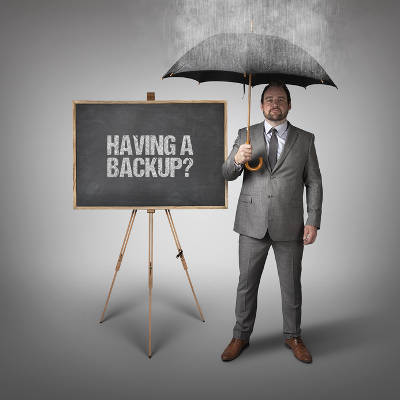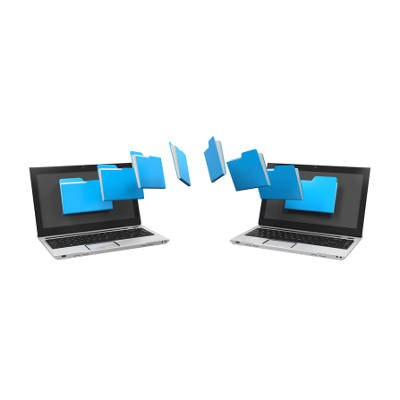Do You Need Data Backup? The Answer: Absolutely

Data backup is something of a conundrum for many small businesses. The classic mindset is that they don’t think they need data backup because there’s no way they’ll be struck with a data loss disaster. Their office may not be located in a place prone to natural disasters, and the organization is so small that the assume they are off the hook when it comes to hackers. This doesn’t reduce the value that a good data backup system can offer, though.
Having a “it won’t happen to me” mentality will only make it hurt even more in the event that your business does suffer data loss. Many problems can result in data loss; hardware failures, end-user errors, surges and lightning, fires, and floods, can all leave you stranded. Here are three indicators that you know you need a proper data backup system.
You Regularly Use Contact Information and Other Data
Data that’s crucial for operations is of the utmost importance for your business. If you happen to lose it due to a disaster or a user error, you’re out of luck if you don’t have some sort of data backup system implemented. If your line of work depends on this data, you need to do everything in your power to protect it from any circumstances that could lead to its destruction or loss.
You Need to Access Historical Files and/or Records
Depending on your industry and the regulations that come with it, you might be required to keep a backup of your data. There may be other requirements as well, such as keeping your data off site or encrypted.
Your Employees Need It
Nobody is perfect. Even your most seasoned sales person might accidentally save over the only copy of your sales proposal template. Being able to quickly pull a single file or folder from a backup will save a lot of time and frustration. It’s also important to have a backup for your business if you want to ensure your employees’ retention. 60 percent of businesses that suffer a major data loss event file for bankruptcy within 6 months.
You Frequently Experience IT Troubles
If your technology isn’t the most reliable equipment out there, you should consider implementing a full data backup and disaster recovery solution. Hardware failure is a common reason why organizations lose data, simply because it seems to come out of nowhere. There are warning signs, though, if you know where to look. If your hardware starts to make strange noises, experiences operational inefficiencies, and is generally more trouble than it’s worth, data backup is critical.
You Don’t Have One At All!
To not be using some type of backup system is, in a word, risky. Ultimately, having a data backup and disaster recovery solution is a great preventative measure to take advantage of in a perilous and unpredictable technology field. Even something as simple as an onsite backup solution is better than not having one at all. However, you’ll want only the best solution for your business’s needs, so we recommend taking full advantage of our cloud-based Backup and Disaster Recovery (BDR) solution.
Could your business use a hand with implementing data backup and disaster recovery? If so, reach out to Catalyst Technology Group at (317) 705-0333.
Best Practices for Data Backup and Disaster Recovery

Have you considered the process in which your organization takes data backups and restores them following an emergency? The value of data backup and fast recovery can’t be ignored. Unless you take proper precautions, you could potentially face a situation that threatens the very existence of your business.
To emphasize the importance disaster recovery, consider this example. If your office were to catch fire due to an electrical problem, your legacy could erupt in flames alongside it. Even if you evacuate the building and save your employees, your technology will suffer and burn with the building. Some networking components might survive, but you’ll be lucky if anything can be salvaged from an event like this. This is why every business needs a data backup system in place.
Natural disasters, like floods, hurricanes, and thunderstorms can all cause problems for you as well. Therefore, you need to take care with how you manage your technology and your data. Even the slightest mistake could lead to large amounts of data loss. Therefore, the question of whether you will suffer from some sort of disaster isn’t if it will happen, but when it will happen. You need to take measures now to avoid suffering from disasters in the future.
Many organizations that have considered data backup and disaster recovery may not have the most optimal solutions implemented. If anything, they will have magnetic tape backup, which has long been considered the industry standard. Unfortunately, the many flaws prevalent in tape backup make it unappealing for SMBs. Since they are so resource-intensive, they must be performed after hours, and only one backup can be taken during the workday. This means that you could lose up to 24 hours worth of data in the event of a disaster–not exactly the ideal way to manage disaster recovery.
Plus, since some organizations will keep their tape backups located on-site or on their in-house infrastructure for convenience, a fire could simply destroy them along with the rest of your assets. A hacking attack could also target any digital backup files stored on your infrastructure, placing them at risk of corruption or theft. Naturally, the best way to handle data backup storage is to store them offsite, but this can complicate the actual disaster recovery process. What is the ideal way to store data while also allowing for great recovery time?
One way to solve these issues is to reach out to Catalyst Technology Group and ask us about our cloud-based backup and disaster recovery (BDR) solution. Since BDR takes smaller backups as often as every 15 minutes, your data loss is significantly reduced, if not mitigated completely. BDR only takes backups of files that have changed since the last time a backup was taken, ensuring redundancy without causing trouble for operations. The possibility of user error is also eliminated, as the backups happen automatically rather than manually. Your data will then be sent to a secure offsite data center for storage until the day you will inevitably need it. The data is then recovered via an Internet connection directly to the BDR device until you’ve found a replacement server unit to fulfill the role. It’s just one way that enterprise-level technology can help your SMB thrive.
To learn more about data backup and recovery, reach out to us at (317) 705-0333.

